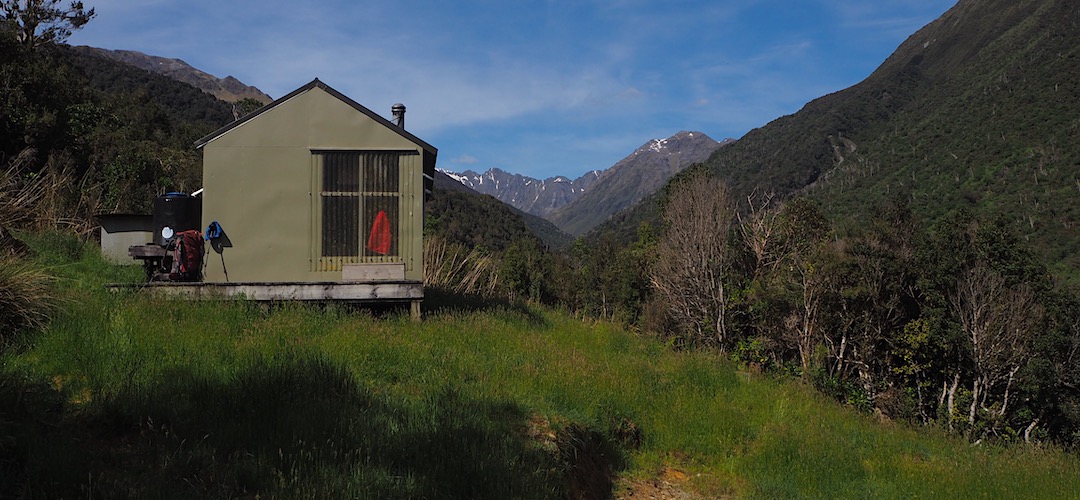Returning up the river wasn’t a problem.
Somehow, the same territory never seems as far the second or subsequent trip. Some scrabbling through odd bits of vegetation. The same greasy ups and downs with the side creeks.
Leaving before 8 am in the hope that the flow would be lower earlier in the morning, and that is how it proved.
I guessed I’d get through the deluge, and that’s what eventuated.
The water level at the waterfall was somewhat down on yesterday, and this time I was physically and mentally prepared.
Everything was inside my two plastic pack liners. Removed my glasses. Raincoat fully zipped up.
The same low route worked, but where I turned around yesterday, I lent and grabbed a rock with my leather glove clad hand, and with my face being fully water blasted, dragged myself through.
Water shot straight down my back, and of course my bottom half was already soaked. Boots full of water.
But my trip was back on track, and was mostly easy enough for the rest of the day.
The track was fully benched in the 1860s by gold miners, or those that arrived too late to make money just picking gold up the ground. Instead, it was backbreaking pick and shovel, and not inconsiderable quantity of dynamite. Much is in excellent condition. It’s just those tributary crossings that have tended to wash out, particularly recently.
Once through the Staircase Creek, I thought I might get up for a look at Newton Creek Hut, albeit without needing to lug my pack.
I had a steep hundred metres drop down to the swingbridge, then a slimy chain to get down to the greasy rocks at the river’s edge. I made about a quarter of the way to where the track starts climbing, but gave up as conditions deteriorated.
The river height meant I needed a bush bash to continue, and thought better of it, and so retreated back up the hill.
Ken the stoat trapper was in the hut, with his very licky dog outside. He had flown into Grassy Flat Hut, worked the traps up to Harman Hut, then down to Mudflats, and still arrived before me. Two stoats, a weasel, two rats his count. It will be January when the young stoats start to move from their nests that the big catch happens. 50 stoats is common then. That removes just enough to allow the blue duck/whios to do their reproductive thing successfully.
I’ve been hunting orchids: two species seen. Also a solitary blue duck/whio, on Day 1, and one deer, on Day 2.
We had a lot to discuss.
We exchanged notes on river heights, but overall it was early to bed.
A guide to the night’s accommodation: Mudflats Hut
